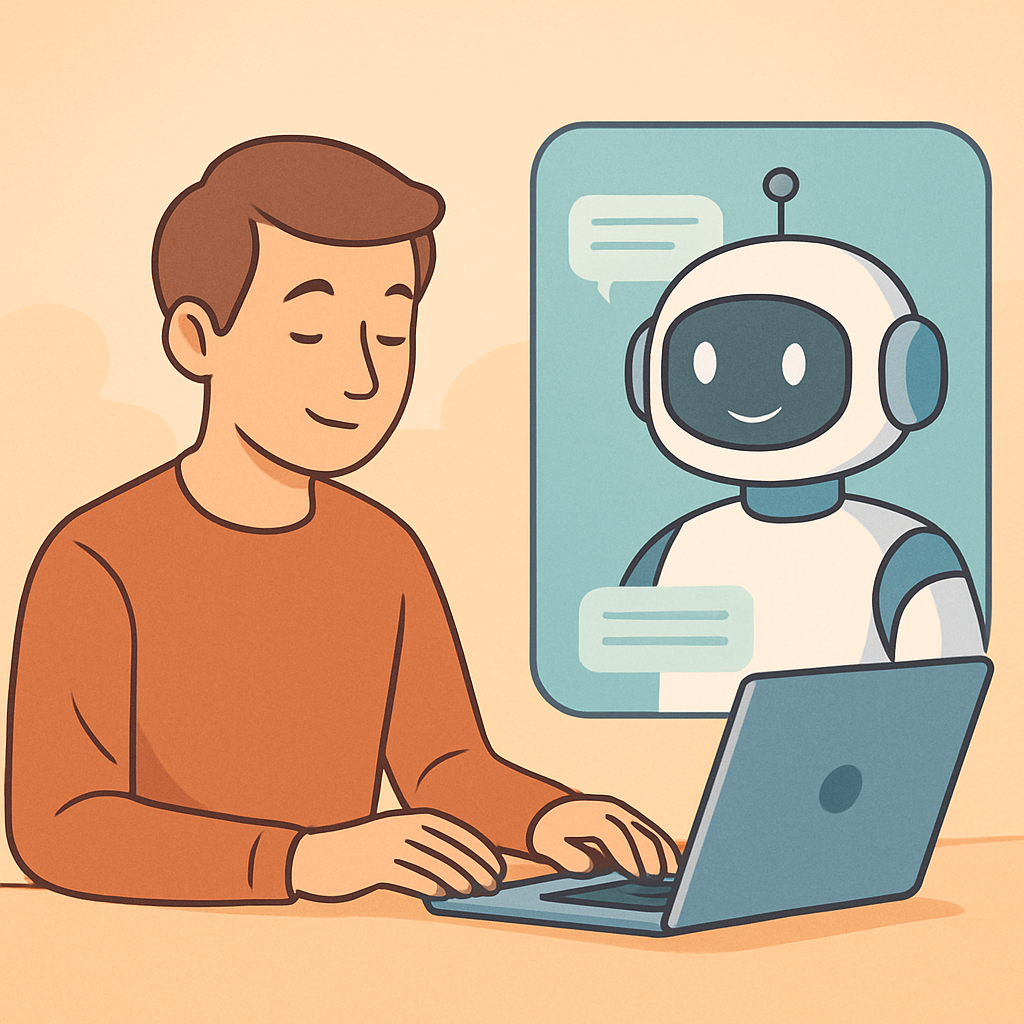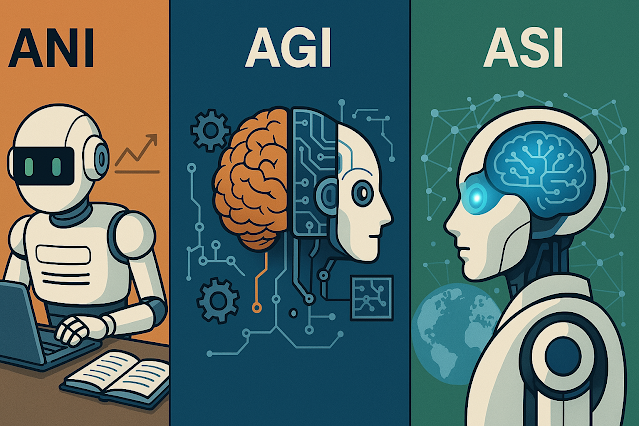Before We Begin
Artificial Intelligence (AI) is no longer just for computer scientists. It is everywhere, powering your phone’s voice assistant, recommending your next Netflix show, helping doctors in hospitals, and even driving cars. But for beginners, the challenge is not the technology itself, it’s the terminology. Words like “LLM,” “generative AI,” or “prompt engineering” can feel confusing if you’re new.
That’s why this guide is designed like a roadmap. You will start with the basics (What is AI?) and gradually move toward more advanced terms. Each concept is explained in simple English with real-life examples, so even if you’re from a non-technical background, like a teacher, student, or enthusiast, you’ll understand the world of AI step by step.
Now, let’s explore the Beginner’s AI Glossary Roadmap.
Step 1: Foundation
Artificial Intelligence (AI)
Computers acting smart like humans by thinking and problem-solving.
Example: Google Maps finding the fastest route.
Algorithm
A set of step-by-step instructions a computer follows to complete a task.
Example: The recipe Google Maps uses to find the fastest route.
Data
The information AI learns from (numbers, text, images).
Example: Amazon knowing your shopping preferences based on your past purchases.
Data Science
The practice of using data to find answers and make smart decisions. It’s like being a detective for information.
Example: A streaming service analyzing viewing habits to decide which new shows to create.
Training
Teaching AI to find patterns by showing it lots of examples.
Example: Showing an AI thousands of dog and cat photos so it can learn the difference.
Model
The result of AI training. It’s the specific system that has learned from data and can now make decisions.
Example: The AI that recognizes your face to unlock your phone is a “face recognition model.”
Step 2: Learning Methods
Machine Learning (ML)
AI that improves automatically by learning from data without being explicitly programmed.
Example: Netflix learning your taste to recommend shows you might like.
Helpful Tip
Think of AI, ML, and Deep Learning like nesting dolls. Deep Learning is a specific type of Machine Learning, and Machine Learning is the most common way we achieve AI today.
Deep Learning
A type of ML that uses layered “neural networks” to find complex patterns in data.
Example: Your phone’s camera identifying a person to focus on in a picture.
Neural Network
A digital brain made of connected layers that work together to solve problems.
Example: The network that helps an AI recognize a cat in a photo by analyzing its features layer by layer.
Reinforcement Learning
AI learns by trial and error, getting rewards for correct actions.
Example: A robot learning to walk by being rewarded for balancing and moving forward.
Step 3: Language & Communication
Large Language Model (LLM)
An AI trained on huge amounts of text data to understand and generate human-like language.
Example: ChatGPT answering your questions in a conversational way.
Natural Language Processing (NLP)
The field of AI focused on helping computers understand, interpret, and generate human language.
Example: Google Translate converting Hindi to English.
Chatbot
An AI program designed to chat with humans through text or voice.
Example: The customer service chat that helps track your Amazon delivery.
Step 4: Creativity & Generation
Generative AI
AI that can create new, original content like text, music, or images.
Example: An AI creating a picture of a panda riding a bicycle.
Prompt
Your question or instruction given to an AI.
Example: “Write a short story about an electric car that can fly.”
Prompt Engineering
The skill of crafting clear and effective prompts to get better results from an AI.
Example: Asking “Explain World War II for a 10-year-old” instead of just “Explain history.”
Fine-Tuning
Giving an AI specialized training to make it an expert in a specific area.
Example: An LLM that is further trained on medical textbooks to assist healthcare professionals.
Embeddings
How AI understands the meaning and relationships between words and concepts.
Example: Knowing that “king” and “queen” are related to royalty but are different from each other.
Step 5: Seeing the World
Computer Vision
AI that can understand and interpret information from images and videos.
Example: Facebook suggesting who to tag in your photos by recognizing faces.
Step 6: Advanced AI Behavior
Agentic AI (AI Agents)
AI systems that can proactively take actions and perform multi-step tasks to achieve a goal for you.
Example: An AI assistant that not only finds flights but also books them and adds the trip to your calendar.
Hallucination
When an AI confidently provides incorrect or nonsensical information as if it were a fact.
Example: An AI stating that Leonardo da Vinci invented the airplane.
Step 7: Human Responsibility
Bias in AI
When an AI makes unfair or prejudiced decisions because it was trained on biased data.
Example: A hiring AI that prefers male candidates because its training data consisted mostly of resumes from men.
AI Ethics
The moral principles and guidelines for using AI responsibly to help humans and avoid harm.
Example: Ensuring that AI tools used by doctors are fair and accessible to all patients.
Enjoyed This Guide?
If this roadmap helped you, consider sharing it with friends, family, or colleagues who are curious about the world of Artificial Intelligence.
Thank you for reading!

